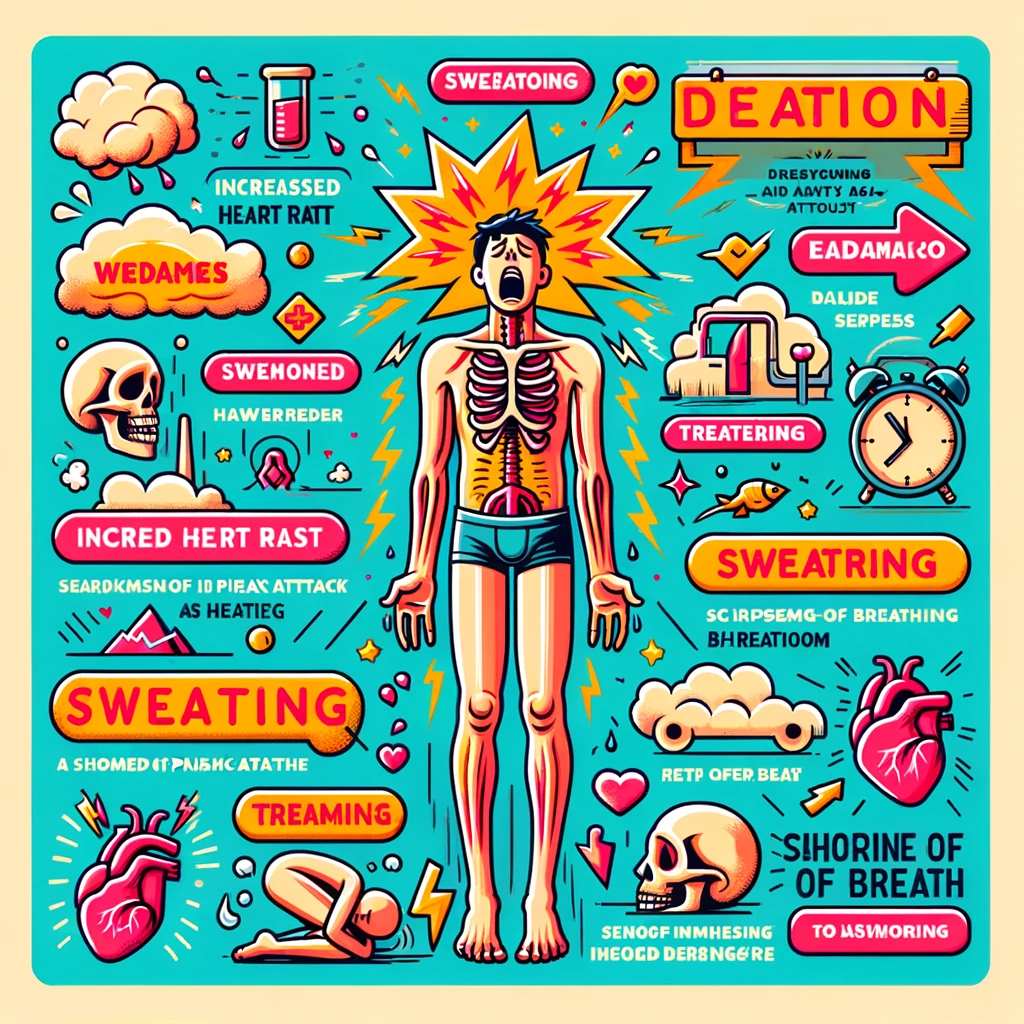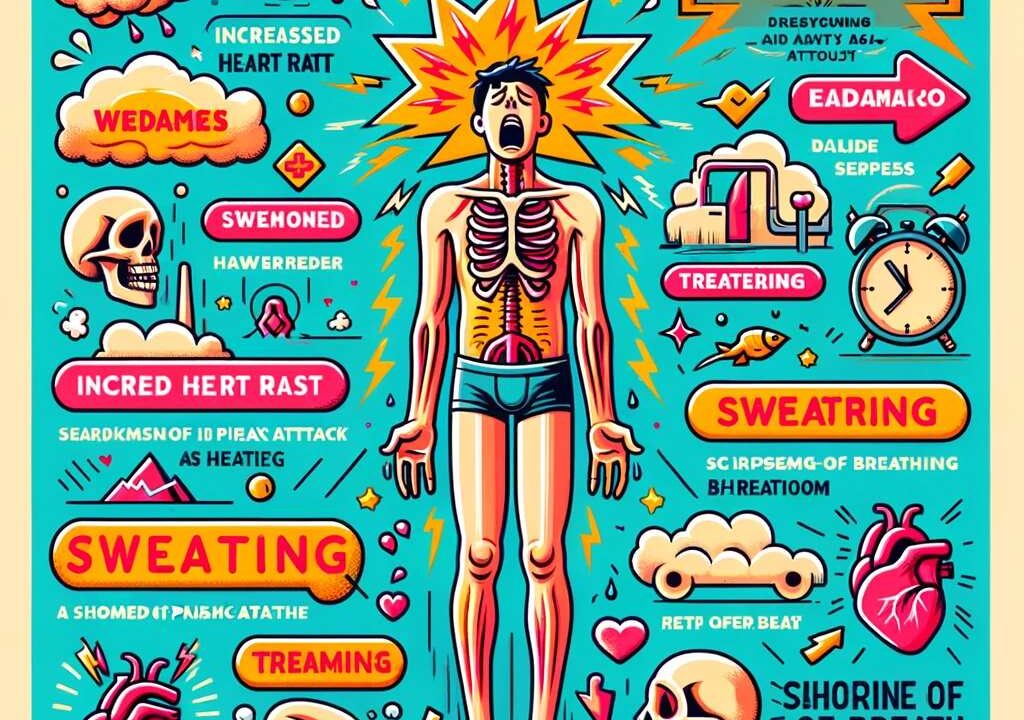“Voices Under Pressure is a participant in the Amazon Services LLC Associates Program, an affiliate advertising program designed to provide a means for sites to earn advertising fees by advertising and linking to Amazon.com. This means that if you click on affiliate links and make a purchase, we may receive a commission at no additional cost to you. We recommend products based on their relevance to the topics discussed and our belief in their quality. Our participation in Amazon’s affiliate program does not influence our content.”

Introduction
Panic attacks are intense, overwhelming experiences that can strike without warning. They involve a sudden surge of fear or intense discomfort that peaks within minutes. During a panic attack, you might experience heart palpitations, sweating, trembling, shortness of breath, a feeling of choking, chest pain, nausea, dizziness, chills or heat sensations, numbness or tingling sensations, feelings of unreality or detachment from oneself, and fear of losing control or impending doom.
While panic attacks can be frightening, it’s important to remember that they are not life-threatening. Understanding what to do in the aftermath of a panic attack can significantly reduce its impact and help prevent future occurrences. This guide aims to provide you with practical steps and supportive measures to manage the aftermath of a panic attack effectively.
In this article, we will explore the immediate actions to take following a panic attack, long-term strategies to reduce their frequency and intensity, and how to develop an action plan for future occurrences. We’ll also discuss the importance of support systems and resources available for additional help. By equipping yourself with this knowledge, you can regain control and move forward with confidence and resilience.
Table of contents
Understanding Panic Attacks
Panic attacks can be alarming, but understanding them is the first step to regaining control.
🡆 Defining a Panic Attack: A sudden surge of intense fear or discomfort.
🡆 Symptoms: Include heart palpitations, sweating, and trembling.
🡆 Frequency: Varies greatly among individuals.
According to the Anxiety and Depression Association of America, panic attacks can affect about 2-3% of Americans annually. ADAA
🡆 Duration: Typically last several minutes, but can vary.
🡆 Physical Sensations: Can feel similar to heart attacks.
🡆 Emotional Impact: Often leads to persistent worry about future attacks.
Understanding panic attacks is crucial in managing them. “The Panic Attack Recovery Book” by Stephanie Moulton Sarkis provides insightful strategies for coping and recovery.
Enhance your journey to recovery by exploring Audible’s Plus Catalog. Enjoy unlimited access to a vast selection of audiobooks, podcasts, and originals, including ‘The Panic Attack Recovery Book.’ With Audible, you get one credit each month for any title to keep forever, all in one convenient app.
🡆 Triggers: Stress, specific phobias, or no apparent reason.
🡆 Prevalence: Affects all ages, more common in adults.
By grasping the nature of panic attacks, individuals can start their journey towards effective management and recovery.
Immediate Steps Post-Panic Attack
After experiencing a panic attack, it’s crucial to focus on immediate recovery and calming techniques.
🡆 Seek a Comfortable Space: Move to a quiet, safe place.
🡆 Focus on Breathing: Slow, deep breaths can stabilize your heart rate.
🡆 Acknowledge the Experience: Recognize it’s a panic attack, not a life-threatening situation.
A study in the Journal of Clinical Psychology suggests that mindfulness and breathing exercises can significantly reduce panic attack symptoms. Journal of Clinical Psychology
🡆 Use Grounding Techniques: Focus on physical sensations, like touching a fabric.
🡆 Stay Hydrated: Drink water to help ease dizziness or lightheadedness.
🡆 Avoid Rushing Back to Activities: Give yourself time to recover.
Implementing these steps immediately after a panic attack can significantly aid in your recovery and reduce lingering anxiety.
Long-Term Recovery Strategies
Adopting long-term strategies is crucial for managing and reducing the frequency of panic attacks.
🡆 Seek Professional Help: Consult a therapist specialized in anxiety disorders. Consider accredited mental health coaches from Voices Under Pressure for guided support.
🡆 Adopt a Healthy Lifestyle: Engage in regular exercise and maintain a balanced diet for mental health. Personal trainers accredited by Voices Under Pressure can tailor fitness programs to your needs.
🡆 Prioritize Sleep: Quality sleep is essential for stress management.
The National Institute of Mental Health emphasizes the importance of therapy and lifestyle changes in treating panic disorders. NIMH
🡆 Learn Stress Management: Techniques like yoga and meditation can be beneficial.
🡆 Limit Stimulants: Reduce caffeine and sugar intake.
🡆 Stay Connected: Maintain social connections for emotional support.
Incorporating these strategies into your daily routine can significantly improve your ability to manage panic attacks and enhance overall well-being.
Building Resilience and Coping Skills
Developing resilience and effective coping skills is crucial in the journey to overcome panic attacks.
Understanding and managing your emotional responses to stress is a vital part of this process. It’s about recognizing the early signs of anxiety and employing techniques to prevent a full-blown panic attack.
📘 Recommended Reading: “Master Your Emotions: A Practical Guide to Overcome Negativity and Better Manage Your Feelings” by Thibaut Meurisse provides valuable insights into emotional regulation and resilience building.
Cultivating a Supportive Environment
Creating a supportive environment both personally and professionally can significantly impact your ability to manage panic attacks.
Surround yourself with people who understand your condition and can provide support when needed.
Engaging in communities or groups, either online or in person, where experiences are shared can be incredibly beneficial. It’s important to remember that you’re not alone in this journey.
Embracing a Holistic Approach
A holistic approach to managing panic attacks involves paying attention to all aspects of your life. This includes physical health, mental well-being, and social connections.
Such an approach can lead to a more balanced lifestyle, reducing the overall stress that may trigger panic attacks.
Engaging in activities that bring joy and relaxation, like hobbies or leisure activities, is also important. They provide a necessary distraction and a source of happiness, which can be incredibly therapeutic.
Conclusion
In conclusion, recovering from panic attacks is a multifaceted process involving immediate and long-term strategies, building resilience, cultivating a supportive environment, and embracing a holistic approach to your well-being. Remember, each step taken is a move towards a more controlled and fulfilling life.

